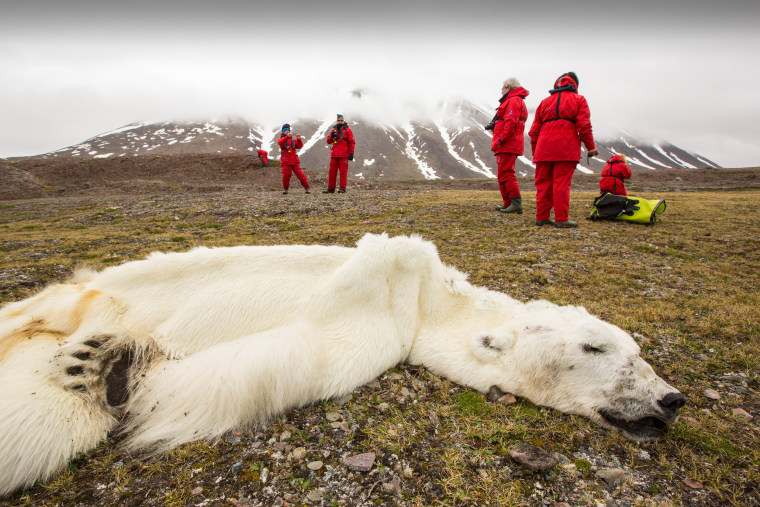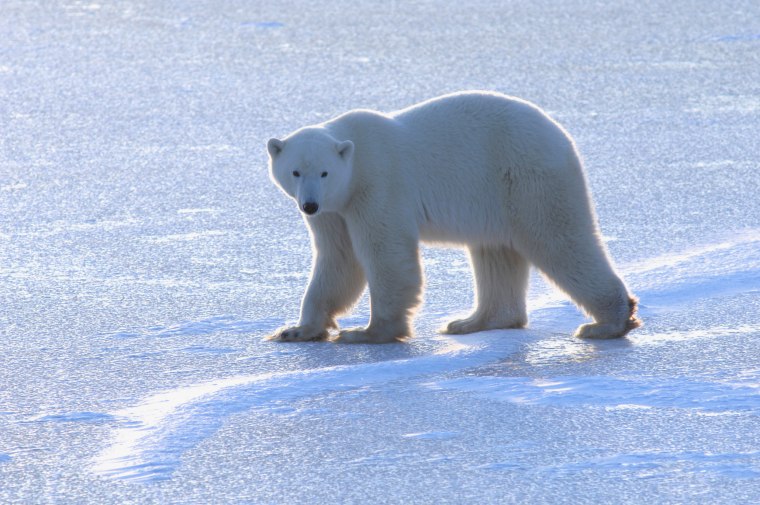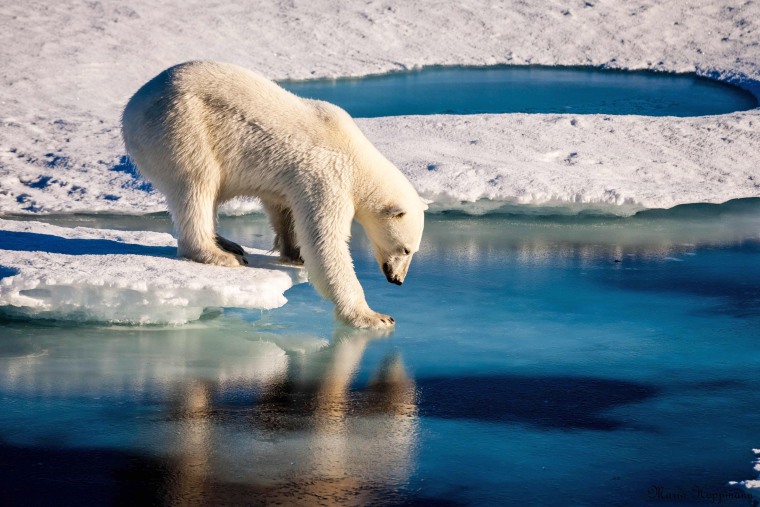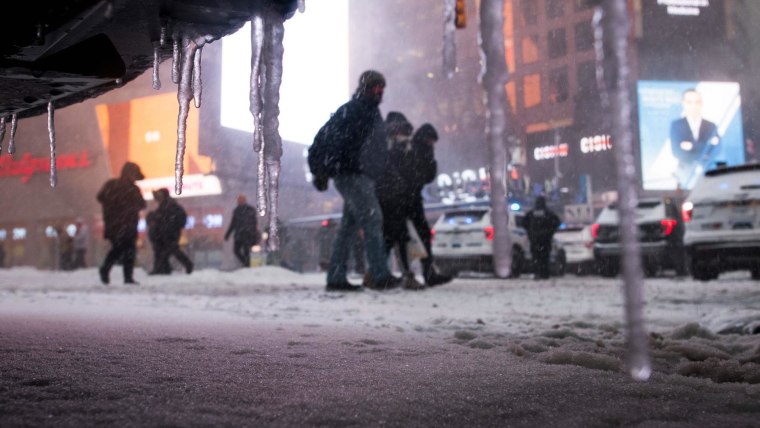what are are people to save polar bear
For the past two decades, scientists have been monitoring the furnishings of a warming Chill on the world's polar bears — and the bears' time to come has looked increasingly bleak.
The latest estimates advise that Arctic ocean ice is disappearing past 14 percent a decade, drastically limiting the bears' power to hunt the seals on which they feed. And research on bears living on the Arctic islands of Svalbard shows that the animals are now reproducing at a rate one-fifth of that seen just xx years ago.
Given these dismal statistics, scientists now predict that the global population of polar bears could autumn from twenty,000 to 30,000 today to fewer than 5,000 by 2100 — and beyond that no 1 knows. Fifty-fifty if a small population of bears manage to hang on, they're not out of the wood.

"One of the problems when population levels in a species get this low is that yous starting time to get an increased likelihood of genetic disorders due to inbreeding," says University of Alberta biologist Andrew Derocher.
Luckily for the bears and the humans who dear them, Derocher and a cadre of fellow scientists are developing a complex fix of strategies to save the animals. It'south an adventurous programme, encompassing everything from providing extra food for the bears to turning female grizzly bears into surrogate moms for their white-coated cousins.
Only information technology may be all that stands between the bears and oblivion.
Food for famished bears
Polar bears can now be plant across the Arctic Circle from Alaska to Russia. But as the planet heats up and body of water ice melts, the animals' range will shrink along with their population. (Some people have suggested replacing lost sea water ice with artificial floes, but this would be unlikely to work because algae — the basis of the entire food chain that ultimately provides seals for the bears — grows only on existent ice.) Ultimately, the but polar bears to survive in the wild may exist the ones living in the Norwegian bay region of the Canadian archipelago.
"This region is expected to be one of the terminal bastions of Chill sea ice," says Steven Amstrup, chief scientist at Polar Bears International, a conservation group in Bozeman, Montana. "With the right planning and strategies, nosotros can help polar bears remain there as long as possible."
For 5,000 bears to survive in this region (the minimum thought to be required to prevent inbreeding), scientists believe the animals may need help from humans. Derocher envisions helicopters zipping around the region, dropping comport chow. Without such deliveries, he says, hungry bears might wander s into human settlements — and run a risk beingness shot.
Airdrops of bear chow wouldn't come inexpensive. Derocher estimates that delivering enough chow to sustain those 5,000 bears could cost the Canadian government $2 1000000 a month. Given the hefty price tag, he proposes that the chow be used merely during times when the bears are finding it especially difficult to grab and kill seals.
Maintaining genetic diversity
The Norwegian bay polar bears are genetically unique. If they're the just bears to survive in the wild, they may lack the genetic multifariousness needed to stay healthy over the long term. "If you don't take a various population, you lot run the chance of animals not having the adjustability to deal with a disease, for instance," Derocher says.
To address this trouble, Derocher and his young man scientists call back it might exist necessary to relocate polar bears from other parts of the Arctic to the Norwegian bay region. The animals would be shot with tranquilizer darts and so transported n by aircraft for release.

"You'd mainly be looking at relocating juveniles, as the problem with shifting developed polar bears is that they immediately want to go back where they came from," Derocher says. "You'd besides look to initially ensure there's lots of food resources, perhaps through deposits of acquit grub, to make them cracking to stay in that location long term."
Another possibility would be to keep a various population of polar bears in zoos and then reintroduce the captive animals into the wild if they're needed to sustain a dwindling population. "Once the planet starts to cool again in hundreds or thousands of years, and ocean water ice reforms, you would have a nucleus of bears which yous could then allow to recolonize the areas they formally occupied," Derocher says.
Surrogate mothers
If the population of polar bears in the wild drops precipitously, scientists may seek assistance from grizzly bears, which are genetically like to polar bears just well adapted to survive on an increasingly hot planet.

Derocher thinks we could freeze polar bear sperm and eggs and use them, if necessary, to create embryos that would be transplanted into female person grizzlies. "Nosotros know this would be quite viable, just that's probably a scenario we're only looking at if we meet a catastrophic refuse in the species in the second half of this century," he says.
But Amstrup warns that unless nosotros find ways to mitigate the ongoing warming of the Arctic, the species will cease to exist in the wild fifty-fifty if we turn to assisted reproduction.
"If man-driven climate alter continues unabated, the last water ice areas will ultimately disappear, and the remaining wild bears with them," he says. "There'south no hereafter for polar bears in an Arctic without the bounding main ice which enables them to hunt and grade the dens where they heighten their cubs. From then on, the species will merely exist in zoos."

FOLLOW NBC NEWS MACH ON TWITTER, FACEBOOK, AND INSTAGRAM.
Source: https://www.nbcnews.com/mach/science/scientists-hatch-bold-plan-save-polar-bears-ncna851356
Post a Comment for "what are are people to save polar bear"